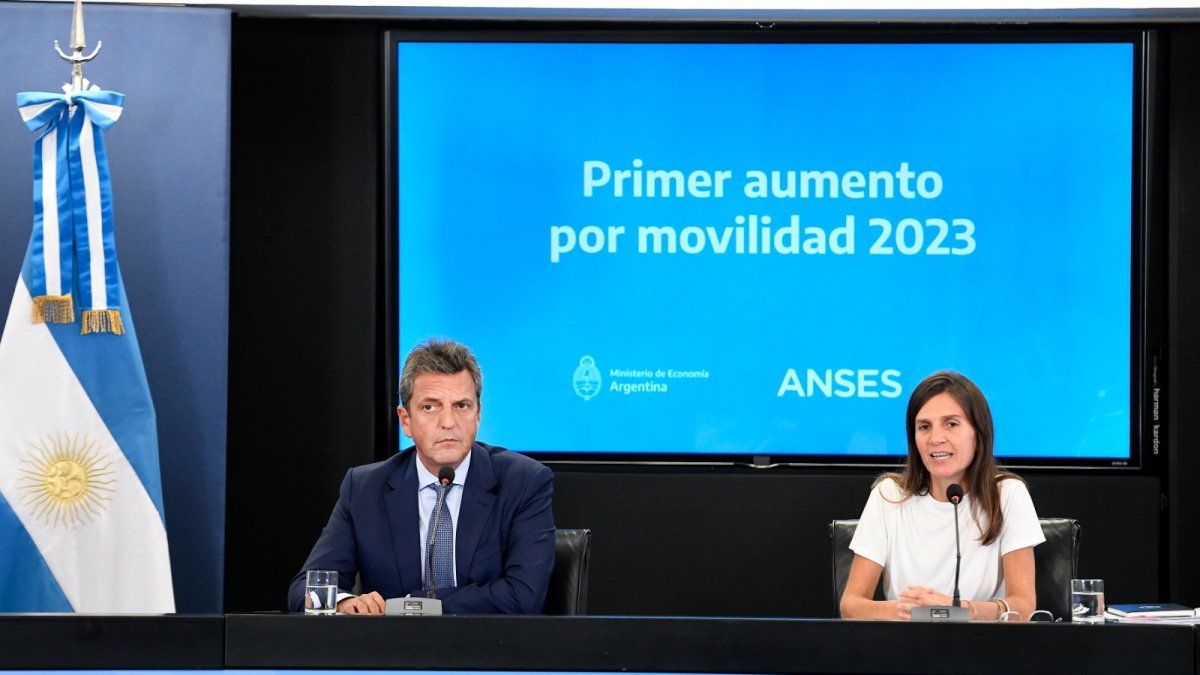The Government will publish the “fine print” to access the pension payment plan approved by Congress, through which some 800,000 people without the corresponding contributions. The regulation, which will be published in the coming days in the Official Gazette, ensures that for the “fiscal effort that comes with it”it is important to include “guidelines for socioeconomic and patrimonial evaluation”.
The requirements come after strong criticism from the International Monetary Fund (IMF) to the moratorium, which in its last report described it as “unforeseen”and asked “contain fiscal costs” through “focusing the regime on those most in need.” The regulation meets at least three requests made by the IMF.
the fine print
In February, Congress approved the Pension Debt Payment Plan, which will allow 60-year-old women and 65-year-old men to retire who did not have the required 30-year contribution. The regulations were published quickly, in mid-March, in the Official Gazette, as the law 27,705. There it was established that people will be able to regularize missing periods until December 2008, with an amount to be deducted from the retirements that may not exceed 120 monthly installmentsand may not exceed the 30% of the current minimum credit.
However, in the publication of the law it was established that the Executive Branch had a period of 90 days to proceed with its regulation. This fine print was written over the last few weeks by the Ansesorganism that leads fernanda ravertain conjunction with the AFIPof Carlos Castagneto. The exchange of drafts could have come to an end and the regulations would be ready this Thursday, but with the holidays it will only be made public in the Official Gazette next week.
In the economic policy recommendations made by the IMF every three months when he publishes the report with the monitoring of the goals, he indicated: “Early and decisive actions are required to address in a lasting way the significant unfunded fiscal costs of the unforeseen pension moratorium, 0.4% of GDP in the medium term, to ensure the path of fiscal consolidation”.
Despite the drought, the fiscal deficit target remains at 1.9% of GDP. “The moratorium created additional challenges for fiscal consolidation, for which additional policy measures will be required to mitigate the impact and maintain the scheduled fiscal adjustment path”adds the document, published late this Monday, two days after the approval of the fourth revision.
IMF claim
Part of the claims made by the IMF in Monday’s report will be seen in the regulationsaccording to the information he was able to obtain Ambit. The Fund’s document ensures that in order to face the costs of the moratorium, foreseen for this year at 0.2% of GDP, and for the medium term at 0.4%, “efforts are being made to issue an application regulation , to guide the entry into the moratorium to those with the greatest need”, and thus achieve savings of 0.2% of GDP.
The IMF mentioned four points: guarantee “strong resource check”, based on income and wealth; increase deductions from pensions, through an interest rate structure that increases with the increase in contribution quotas; allow access only to those who have made some contributions to the pension system and are not receiving other social benefits; and lastly, giving up access to the official exchange rate.
At least three of these were fulfilled: regarding the resource verification, the regulation establishes in one of its articles how much the monthly average gross income must be for the 12 months prior to the evaluation date, the average spending and consumption also of the last year, in which the use of the cards will be analyzed, and the “asset declaration in the income tax affidavits”. A socioeconomic evaluation It was recently included in the 2014 moratoriums, with Diego Bossio. Although Yes, it could happen that the one who does not pass the evaluation, can cancel the fee in a single payment and thus be able to access.
The thing is The regulation that will be published ensures that “the aforementioned regime is aimed at those people who present greater vulnerability in social terms.” In addition, unlike the first moratoriums of the governments of Néstor and Cristina Kirchner, for which the bulk of people retired without contributions, This moratorium will be incompatible with other pension benefits (except for cases where the holder’s only benefit is contributory and its amount does not exceed the minimum).
The point of the IMF that ensures that they will not be able to access the savings dollar was ratified this Monday in a statement made by the Central Bank. Another of the points to which the Fund refers is that the Government has already completed one of the structural requests that it had been making since the agreement was signed, in March 2022, and that is to “carry out a diagnostic study of the special regimes of pensions”. What is not public is its result or what it will be used for. At the moment, from the opposition of Together for Change they have been alerting about the initiative to modify these special regimes in case they win the elections.
What yes, the fine print does not include some recommendations made by the IMF: for example, what to have rates higher interest rates the more installments, given that the installments are updated by mobility, to maintain the installment/credit ratio, although it is clear that the more years to be regularized, the greater the amount of the installment. The point that those who do not have any contribution are left out is not foreseen either. Sources consulted consider that this point is contradictory with that of reaching those most in need.
Source: Ambito




